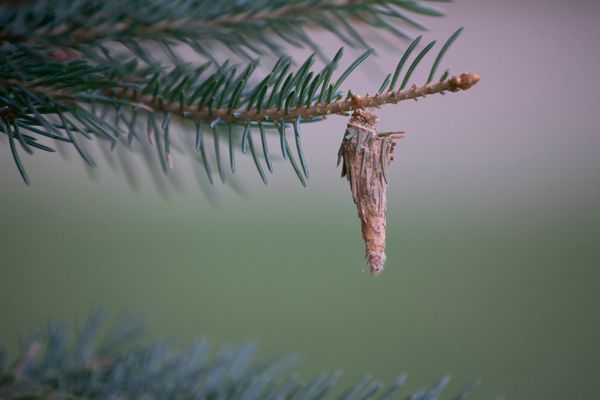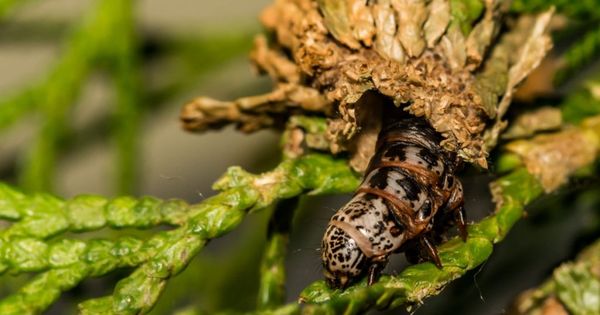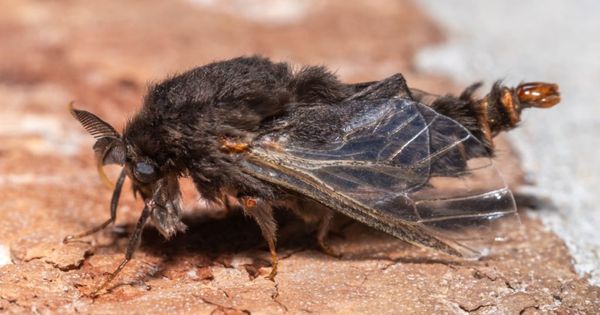Bagworms may look like harmless worms, but they’re actually moths. These insects live their entire life cycle inside a bag that they construct using silk and bits of foliage. The bags start small but grow as the larvae get bigger. They attach bits of plant debris, like leaves and twigs, to their bodies using silk to create these bags.

In late spring or early summer, the eggs of a female moth hatch. The adult male moth is the only one that leaves the bag to mate, while the female moth stays inside her bag. Bagworms usually infest evergreen and deciduous trees, and their bags can sometimes look like cones, making them easy to miss at first glance.
Their preferred host plants are cedar, arborvitae, juniper, and false cypress. However, if these are not available, bagworms will eat the foliage of almost any tree. Despite their seemingly harmless nature, bagworms can cause significant damage to trees if left untreated.

As bagworms feed on the leaves of trees, it becomes harder for the tree to produce the nutrients it needs for growth and survival. Additionally, the infestation weakens the tree, making it more susceptible to diseases, other pests, and environmental stressors. Ultimately, if not treated, the tree can die.
If you notice bagworms on your trees, there are several ways to manage the infestation. One method is to manually remove each bag/cocoon from the tree one by one. However, this approach is only practical for a small number of affected trees. If you have a larger landscape with numerous bagworm bags, there are other effective methods available.
Other Methods for Managing Bagworms Infestations
1. Prune and Destroy: If there is widespread infestation, prune the affected branches and make sure to properly destroy them. Also, check for other areas of infestation, such as nearby fences. Pruning and destroying the affected parts can help control the spread of bagworms.

2. Encourage Natural Predators: One natural way to control bagworms is to encourage their natural predators, such as birds. Providing bird feeders and birdhouses in your garden can attract birds that feed on bagworms.

3. Chemical Control (Last Resort): If other methods don’t work, you can consider using chemical control as a last resort. Acephate (Orthene), cyfluthrin, and spinosad are some commonly used sprays. However, it’s crucial to approach chemical control with caution due to potential environmental impacts. If you decide to use chemicals, apply them on a windless and dry day to ensure quick drying and avoid drifting on the breeze.
To prevent bagworm infestation in the first place, it’s best to regularly inspect your trees and practice good maintenance. Planting trees at an appropriate distance to avoid overcrowding and monitoring the surrounding vegetation can also help prevent infestations.
Remember, early intervention is key to managing bagworm infestations and protecting your trees. If you find this information helpful, please share it with your family and friends on Facebook.







